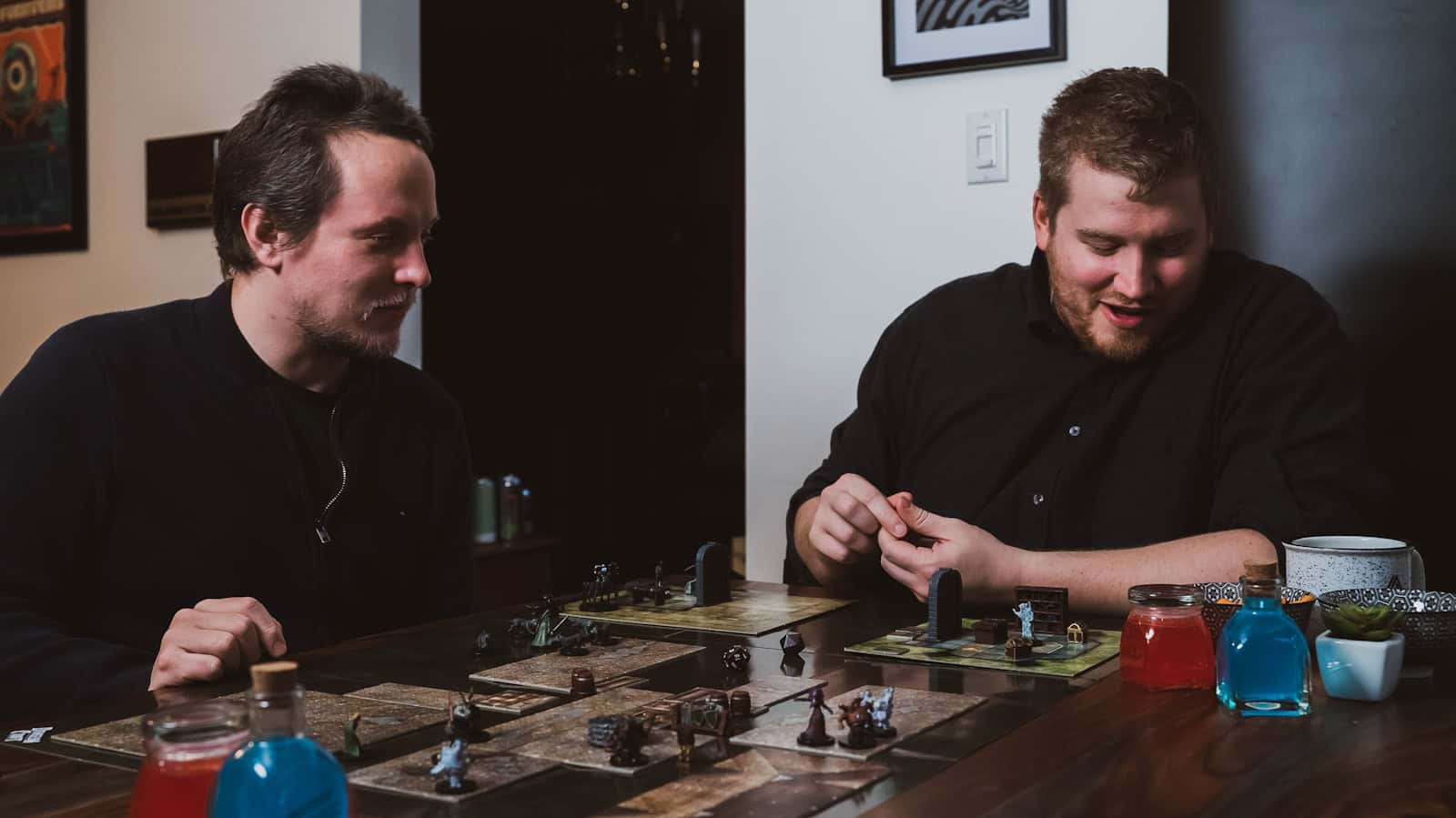Thaumaturgy may be one of the simplest magical effects in Dungeons & Dragons, but it continues to punch well above its weight—both in gameplay and narrative flair. With the rollout of the D&D 2024 core rulebook updates and continued balance adjustments across games like World of Warcraft, this once-overlooked cantrip is gaining renewed attention from game designers and fans alike.
Thaumaturgy in D&D
In the newest edition of D&D, Thaumaturgy retains its classic flavor: a divine cantrip that allows casters to create brief supernatural effects—booming voices, flickering lights, rattling windows, and even harmless tremors. But its subtle mechanical tweaks in 2024 have players rethinking how and when to use it.
One of the biggest talking points is the clarification around verbal component amplification. The spell now explicitly allows players to magnify their voice threefold for up to a minute. While not inherently combat-oriented, some players are testing its boundaries—such as using it to interrupt stealthy enemies, intimidate NPCs, or call for reinforcements in sprawling dungeons.
Dungeon Masters (DMs) are split. Some see it as a clever, creative tool deserving of tactical use. Others treat it as flavor text—offering no mechanical edge. Wizards of the Coast has acknowledged this gray area, encouraging DMs to reward creativity without letting cantrips break encounter balance. It’s a cantrip that lives in the “rule of cool” zone, and that’s part of its charm.

Tieflings and Thaumaturgy: A Perfect Match
The Tiefling race continues to be closely tied to this spell. With Otherworldly Presence still granting Thaumaturgy as a racial feature, Tieflings remain a natural fit for flashy, theatrical characters. Combined with their infernal heritage and naturally high Charisma, this free cantrip helps Tieflings shine in roleplay-heavy campaigns—from intimidating foes to stirring up a tavern crowd.
Some min-maxing players are even stacking it with subclasses like Bard, Warlock, or Sorcerer, creating socially dominant characters who can manipulate, deceive, or awe their audience with every word. In the right campaign, Thaumaturgy isn’t just a fun spell—it’s a character-defining tool.
Thaumaturgy in World of Warcraft: A Different Kind of Crafting Magic
While “Thaumaturgy” in World of Warcraft doesn’t share mechanics with its D&D counterpart, it’s recently been a point of attention for a different reason: crafting balance.
In the February 2025 WoW hotfixes, Blizzard made key adjustments to the Thaumaturgy system:
- Recipe Difficulty reduced from 750 to 745, making the skill more accessible.
- Perk tuning was introduced to reduce unpredictable transmutagen yields.
- The system now emphasizes consistency over RNG, aiming to reduce player frustration while crafting rare components.
These changes reflect Blizzard’s broader design philosophy in Dragonflight and beyond: making professions feel impactful without being punishing. Thaumaturgy now functions more like a precision-based crafting tool, and less like a gamble. Still, some players argue it’s lost its uniqueness as a result.
Cross-Game Influence: A Shared Name, Evolving Functions
Though WoW and D&D interpret Thaumaturgy in very different ways—one as an RPG cantrip, the other as a crafting mechanic—the name itself evokes a similar theme: mystical manipulation of the unseen.
- In D&D, it’s about divine authority and theatricality.
- In WoW, it’s about magical transmutation and arcane refinement.
The shared terminology reflects how fantasy games continue to borrow and iterate on classic tropes, with each system adapting the concept to its unique gameplay needs.
Final Word: A Little Spell With Big Reach
Thaumaturgy remains one of the most versatile and misunderstood powers across fantasy games. Whether you’re amplifying a Tiefling’s demonic speech in a smoky tavern or crafting rare gear with precision in Azeroth, Thaumaturgy represents magic at its most flavorful: small, strange, and surprisingly powerful.
For players and DMs alike, it’s a reminder that the best magic isn’t always about damage—it’s about presence, creativity, and style.
Key Takeaways
- Thaumaturgy in D&D 2024 includes subtle rule changes that impact its interaction with other spells that have verbal components.
- Tieflings still receive Thaumaturgy for free as part of their racial abilities, enhancing their mysterious and otherworldly nature.
- While primarily a utility cantrip for creating minor magical effects, creative players continue to find new ways to incorporate Thaumaturgy into both combat and roleplaying scenarios.
Evolution of Thaumaturgy in 5e
Thaumaturgy has changed in interesting ways since its introduction to the 5th edition of Dungeons & Dragons. The cantrip has maintained its core identity as a minor magical effect while receiving clarifications about its practical applications.
Historical Overview
Thaumaturgy first appeared in 5e as a cleric-exclusive cantrip that allowed characters to create minor magical effects. It was designed to give clerics flavorful ways to demonstrate their divine connection. The spell enabled users to manifest supernatural signs within a 30-foot range.
The original version included effects like:
- Voice amplification for up to a minute
- Causing flames to flicker, brighten, dim, or change color
- Creating harmless tremors in the ground
- Creating an instantaneous sound
- Causing unlocked doors or windows to fly open or slam shut
- Altering the caster’s eyes to an unusual appearance
These effects were primarily designed for roleplay rather than combat advantage. Many Dungeon Masters struggled with consistent rulings about its limitations, particularly regarding how loudly a voice could be amplified.
Playtest Insights
Recent playtests have clarified Thaumaturgy’s capabilities rather than fundamentally changing them. Designers recognized that players often tried using the cantrip in creative ways that stretched beyond its intended scope.
The playtest material specifically addressed common misuses, such as attempting to:
- Create distracting sounds to lure guards away
- Use voice amplification for performance advantages
- Create specific voices rather than just amplifying one’s own
This led to guidance emphasizing that Thaumaturgy creates sounds but not distinct voices – that remains Minor Illusion’s domain. The playtest also reinforced that while Thaumaturgy can create minor wonders, it cannot replicate the effects of higher-level spells.
Most importantly, the playtest emphasized Thaumaturgy’s role as a flavorful roleplay tool rather than a tactical advantage in combat situations. This helped maintain game balance while still encouraging creative character expression.
Mechanics and Gameplay
Thaumaturgy provides versatile magical effects that clever players can use in various situations. The spell’s mechanics define what it can and cannot do, with specific applications that extend beyond simple roleplay opportunities.
Spell Mechanics
Thaumaturgy is a cantrip available primarily to clerics in D&D 5e. It creates minor magical effects lasting up to 1 minute. The spell allows for several distinct effects that can be used one at a time:
- Voice amplification (up to three times normal volume)
- Flame manipulation (brightening, dimming, changing color)
- Harmless tremors in the ground
- Creating an instantaneous sound
- Making doors or windows fly open/slam shut
- Altering eye appearance
Players can change the chosen effect as an action during the spell’s duration. Importantly, Thaumaturgy cannot create flames—only manipulate existing ones. This limitation prevents some creative applications players might attempt.
The spell requires no material components, making it accessible in nearly any situation. With verbal components only, clerics can cast it while bound or carrying items in both hands.
Applying Thaumaturgy in Combat
Despite being primarily a utility cantrip, creative players have found ways to use Thaumaturgy in combat situations. The spell’s voice amplification effect might intimidate enemies or create distractions.
Some players have attempted to use the amplified voice to cause physical harm, similar to a sonic attack. However, official rules don’t support this application—the spell description specifically indicates it creates “harmless” sensory effects.
The tremor effect could potentially distract opponents or create the illusion of a larger threat approaching. Opening or slamming windows and doors might provide tactical advantages like revealing hidden enemies or blocking paths.
When combined with abilities like a barbarian’s rage or other spells, Thaumaturgy can enhance roleplaying moments in combat. The altered eye appearance might add to intimidation attempts, potentially affecting morale of superstitious foes.
Classes and Races
The 2024 Player’s Handbook brings several updates to character options that affect thaumaturgy. Different classes and races now interact with this cantrip in unique ways, with specific changes to how tieflings access this magical ability.
Specific Classes Using Thaumaturgy
Clerics remain the primary class with natural access to thaumaturgy. As part of the 2024 rules update, clerics have received several changes including revised spell lists and starting equipment. The class now features six new class features and four revised ones.
The way spellcasting works has changed across all classes. Full casters no longer prepare spells based on their level plus ability modifier. Instead, they get a fixed number based on class level, typically reaching 22 prepared spells at level 20.
Wizards don’t naturally have thaumaturgy on their spell list, but may gain access through certain subclasses or feats. The artificer, which sometimes had access to thaumaturgy through certain builds, is confirmed not to be included in the 2024 Player’s Handbook.
Racial Traits and Thaumaturgy
Tieflings have received significant updates in the 2024 rules. When selecting a tiefling character, players automatically gain the thaumaturgy cantrip for free through the Otherworldly Presence racial feature.
The new Player’s Handbook describes tieflings as either being born in the Lower Planes or having fiendish ancestors who originated there. This connection to fiendish realms explains their innate magical abilities, including thaumaturgy.
Unlike tieflings, dragonborn do not naturally gain access to thaumaturgy. They have their own distinct racial traits that reflect their draconic heritage rather than fiendish connections.
Darkvision remains an important consideration when choosing races with magical abilities. Tieflings typically possess darkvision, allowing them to see in dim light as though it were bright light, complementing their innate magical abilities like thaumaturgy.
Thaumaturgy in World-Building
Thaumaturgy shapes fantasy worlds by influencing societies and religious practices. The magical ability to create minor wonders often defines how certain groups function within game settings and stories.
Influence on Lore and Society
Thaumaturgy’s impact extends beyond simple spellcasting into the fabric of fantasy societies. Communities often view thaumaturgy practitioners with a mix of reverence and suspicion. In many settings, clerics use these minor magical effects to demonstrate their connection to divine powers.
Religious leaders might use thaumaturgy to:
- Enhance sermons with booming voices
- Create atmospheric effects during ceremonies
- Influence crowds through supernatural displays
Giants in some campaign settings view thaumaturgy as a lesser magic, preferring more powerful and destructive spells. This creates an interesting cultural divide between races with different magical traditions.
Characters who master thaumaturgy often hold positions of influence, especially in small towns where such “miracles” are rarely witnessed.
Thaumaturgy and Cults
Cults frequently employ thaumaturgy to recruit followers and maintain control. The spell’s ability to create supernatural signs makes it perfect for deception and manipulation.
Cult leaders typically use thaumaturgy to:
- Fake divine manifestations
- Create ominous effects during rituals
- Intimidate doubters with supernatural displays
According to references in Fizban’s Treasury of Dragons, some dragon cults use thaumaturgy-like effects to simulate the presence of their draconic patrons. These subtle magical manifestations help maintain the mystique around their worship.
The accessibility of thaumaturgy makes it particularly dangerous in cult settings. Unlike higher-level magic requiring extensive training, these minor magical effects can be performed by relatively inexperienced spellcasters yet still create powerful psychological impacts on witnesses.
Incorporating Thaumaturgy into Adventures
Thaumaturgy offers creative opportunities for Dungeon Masters and players alike. This versatile cantrip can enhance roleplaying moments and provide unique solutions to challenges throughout a campaign.
Designing Quests and Challenges
Thaumaturgy can be central to adventure design when DMs create scenarios where sound manipulation proves valuable. Consider designing a quest where players must navigate a sound-sensitive environment where loud noises attract monsters. Players with Thaumaturgy could create distractions to lure guards away or help the party avoid detection.
Religious ceremonies offer excellent opportunities to showcase this cantrip. A tiefling cleric might use Thaumaturgy to make their voice boom during sermons or make temple flames flicker dramatically during rituals.
Some quests might involve intimidating hostile NPCs. The DM could grant advantage on Intimidation checks when a character uses Thaumaturgy to appear more threatening, as the spell can make a character seem more powerful than they actually are.
Thaumaturgic Objects and Traps
Magical items that mimic Thaumaturgy effects can add interesting dimensions to gameplay. Consider enchanted door knockers that amplify sounds throughout a dungeon or magical music boxes that create tremors in specific locations.
Traps triggered by Thaumaturgy create interesting puzzle scenarios. A dungeon might contain pressure plates that activate when someone speaks loudly nearby. Players must deliberately use quiet voices to avoid triggering hazards.
Thaumaturgic traps might include chambers where sudden loud noises cause stalactites to fall or rooms where flickering lights reveal hidden passages. These encourage creative thinking from players who must determine when to use or counter thaumaturgic effects.
Some magical objects could be designed to respond only to the effects of Thaumaturgy, creating puzzles solvable exclusively by characters with access to this cantrip.
Roleplaying and Thaumaturgy
Thaumaturgy offers players a unique toolkit for enhancing character moments and storytelling opportunities during gameplay. This minor magical ability creates possibilities that extend far beyond combat applications.
Character Development
Thaumaturgy helps players express their characters’ personalities and emotions. A tiefling cleric might use it to make their eyes glow during intense prayer, adding dramatic flair to religious ceremonies. A zealous warlock could amplify their voice when delivering threats, making even the bravest warriors hesitate.
The cantrip’s ability to create tremors, alter flames, or produce strange sounds allows players to craft memorable character moments. These small magical effects can become signature traits that other players and NPCs recognize.
Players often incorporate thaumaturgy into their character’s backstory or religious practices. A character might use the spell to honor their deity during prayer or to emphasize important statements during negotiation.
Interactive Storytelling
Thaumaturgy creates opportunities for creative problem-solving beyond combat. Players have used the amplified voice effect to address large crowds or intimidate enemies without fighting. The ability to make doors suddenly slam open or closed has helped characters create distractions or escape routes.
Smart players combine thaumaturgy with other abilities and feats to maximize its effectiveness. A character with high Charisma and the Intimidation skill might pair it with thaumaturgy’s effects for enhanced results during social encounters.
DMs can encourage creative uses of thaumaturgy by rewarding player ingenuity. While the spell cannot directly cause damage, it can influence the environment and NPCs in meaningful ways that advance the story.
Comparative Analysis
Thaumaturgy has evolved significantly in recent editions, with notable changes appearing in the 2024 core rules compared to previous versions. These changes affect both gameplay mechanics and the spell’s versatility in different settings.
Thaumaturgy vs. Arcane Magic
Thaumaturgy stands apart from traditional arcane magic in several key ways. Unlike arcane spells that often rely on complex somatic and material components, thaumaturgy focuses on creating supernatural effects through divine connection.
In the 2024 rules, thaumaturgy appears to have undergone significant modifications. Based on search results, there may be new limitations when using the “booming voice” effect. Players casting thaumaturgy on themselves for voice amplification might be unable to cast spells with verbal components for one minute afterward.
This creates an interesting tactical decision for spellcasters. The divine nature of thaumaturgy contrasts with arcane recovery abilities that wizards possess, making resource management different for divine casters.
Clerics and tieflings benefit most from thaumaturgy. Tieflings in the 2024 core rules receive thaumaturgy automatically through their Otherworldly Presence feature.
Thaumaturgy in Different Campaign Settings
Thaumaturgy’s versatility makes it useful across various campaign settings, though its application differs based on environment and culture.
In urban settings, the ability to amplify one’s voice can help address crowds or intimidate foes. The spell’s flame manipulation effects work particularly well in torch-lit dungeons or ceremonial spaces where controlling light creates dramatic effects.
Some players have attempted creative uses beyond the spell’s intended scope. One reported case involved a player attempting to use thaumaturgy’s voice amplification to harm enemies directly—something DMs typically rule against as it exceeds the cantrip’s power level.
In horror-themed campaigns, thaumaturgy’s tremor and sound effects create excellent atmospheric tension. The spell’s harmless tremors in the ground combined with mysterious sounds can establish a powerful presence in roleplaying scenarios.
Political campaigns benefit from flame color manipulation and voice amplification for dramatic speeches and demonstrations of divine favor.
Thematic Connections
Thaumaturgy’s minor magical effects connect deeply to themes of power and manipulation. The spell’s ability to create supernatural signs links to darker interpretations found in various mythologies and stories.
Thaumaturgy and the Dark Side
Thaumaturgy’s ability to manipulate perceptions shares striking similarities with powers described in Sith legend. Like the dark lords of the Sith who could influence reality around them, practitioners of thaumaturgy can alter their voice, create tremors, and manipulate flames – all displays meant to instill awe or fear.
Some scholars draw parallels between thaumaturgy’s supernatural manipulations and the dark side powers mentioned in ancient texts. Just as Darth Plagueis allegedly mastered unnatural abilities, thaumaturgy users demonstrate control over natural elements in ways that seem to bend reality.
The spell’s theatrical elements – booming voice, glowing eyes, and trembling ground – mirror how dark side practitioners would often display their power to influence apprentices. While thaumaturgy cannot save others from death or create life, its illusions and manipulations serve similar psychological purposes.
Frequently Asked Questions
Thaumaturgy has undergone several changes and clarifications in recent D&D 5E updates. Players continue to discover creative applications for this versatile cleric cantrip as rules evolve.
What are the updated effects of Thaumaturgy in the latest edition of D&D 5E?
Thaumaturgy in the latest D&D 5E edition maintains its core effects with minor clarifications. The cantrip still allows clerics to create supernatural effects including amplifying their voice to three times normal volume for one minute.
Other effects include causing flames to flicker or dim, creating harmless tremors, producing sounds, making doors or windows fly open, and changing eye color. The 2024 rules update preserves these effects while providing clearer guidelines on their limitations.
The spell’s range remains 30 feet, and users can still only have one effect active at a time.
How does Thaumaturgy compare to Prestidigitation in the most recent rules update?
Thaumaturgy and Prestidigitation remain distinct in their focus and application in the latest rules. Thaumaturgy creates supernatural effects that evoke awe or religious significance, while Prestidigitation handles minor magical tricks and conveniences.
The 2024 update clarifies that Thaumaturgy has fewer but more dramatic effects than Prestidigitation. While Prestidigitation can clean objects or create small sensory effects, Thaumaturgy focuses on creating impressive displays that might help convince others of divine power.
Neither cantrip can directly cause damage, maintaining their role as utility spells.
Are there any new uses for Thaumaturgy in D&D 5E as of the latest guidelines?
The latest guidelines emphasize creative applications of Thaumaturgy in social situations. Players have discovered that combining the voice amplification with intimidation checks can be particularly effective during interrogations or negotiations.
Dungeon Masters increasingly allow Thaumaturgy’s flame manipulation to affect multiple light sources simultaneously within range. This creates more dramatic environmental effects during religious ceremonies or tense confrontations.
The tremor effect has found new utility in distracting guards or creating diversions, though the spell’s non-harmful nature remains firmly established.
Has Thaumaturgy been modified for use in Baldur’s Gate 3 following the latest D&D news?
Baldur’s Gate 3 implements Thaumaturgy with some adaptations tailored to video game mechanics. The game allows players to use the cantrip for dialogue options that can intimidate NPCs when combined with the amplified voice effect.
The visual implementations of Thaumaturgy in Baldur’s Gate 3 are particularly impressive, with dynamic lighting effects when manipulating flames. These visual elements help players appreciate the theatrical nature of the spell.
Recent updates to the game have not significantly altered Thaumaturgy’s mechanics, but have expanded the contexts where it can be effectively used in dialogue trees.
What are the limitations on the frequency of casting Thaumaturgy in the current D&D 5E ruleset?
As a cantrip, Thaumaturgy can be cast as many times as desired without expending spell slots. This remains unchanged in the current ruleset, making it highly accessible throughout gameplay.
The primary limitation is that only one of its effects can be active at a time. Casting the spell again to create a different effect ends the previous one immediately.
Each effect has a duration of up to one minute unless dismissed earlier, which provides reasonable constraints while still allowing creative applications.
How does the latest D&D 5E update impact the role of Thaumaturgy in gameplay?
The latest update reinforces Thaumaturgy’s role as a versatile tool for roleplay and social encounters. Clerics and other characters with access to this cantrip can use it to establish religious authority or create atmospheric effects during important moments.
Dungeon Masters are encouraged to reward creative applications of Thaumaturgy beyond the strict parameters listed in the spell description. This approach helps players feel their character choices are meaningful.
The 2024 clarifications help prevent misuse, such as attempts to use Thaumaturgy for damage or mechanical advantages beyond its intended scope.






